Wanted: A 21st Century Education
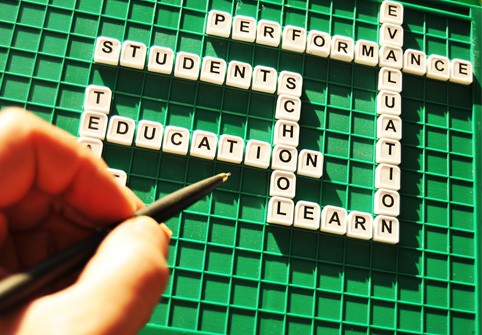
Well into the 21st century, we are still trying to get a handle on what a 21st century education really is – both the question of what young adults really need to know and be able to do and the question of the best way to help them get there. I first encountered this issue as a high-tech executive when coaching talented engineers through a series of workplace myths.
Young engineers tend to come out of school with a mindset that the only truly valuable contributions are individual contributions. In a workplace where nearly all projects require collaboration among colleagues, they are prone to sitting at their desks working on a problem for weeks when a few quick conversations could have the problem solved in hours. Even when coached to seek help, they still feel as though they are somehow “cheating.”
It is also common for young engineers to believe that real problems have only one right answer and that they will get the best “grade” from a supervisor if they come up with it. But that supervisor is more likely to value the engineer who can work with a team to bring up multiple possible solutions, discuss trade-offs and choose one of many imperfect solutions to a complex and constrained real-world problem. Some young adults flourish in this environment – others feel a deep unfairness that the rules have suddenly been changed.
Skills Needed In the Modern Workplace
In his book, The Global Achievement Gap, Tony Wagner lays out seven “survival skills” that are needed in a modern workplace: Critical thinking and problem solving; collaboration across networks and leading by influence; agility and adaptability; initiative and leadership; effective oral and written communication; accessing and analyzing information; and curiosity and imagination. There are many ways to slice and categorize modern skills, but this is a pretty good description of what young adults need to know and be able to do in today’s workplace. The bar has been raised tremendously since the mid-20th century when strong domain-specific skills such as software design, accounting, or automobile manufacturing were enough. In an increasingly networked world, no doubt the bar will continue to rise and in ten years new skillsets that we haven’t yet identified will be the ones that differentiate the best from those who “merely” have the skills enumerated by Wagner.
Definition of a Modern Education
The question of what a modern education needs to be came up again once I became a parent. At very early ages, it became apparent that my son was a mathematician and my daughter a maker. They were privileged to enter a public school with deeply insightful leadership, true communities of practice among educators, the continual thoughtful adoption of research-based pedagogy, and warm, respectful, individual attention to each student. And yet, sadly, the school didn’t have the resources to nurture the individual learning needs of my children in the areas where they had the most passion, motivation, and talent. Having access to extensive resources, and working with a very supportive school, I’ve had the freedom to supplement my children’s education with all manner of personalized experiences both in the classroom and at home. Yet even with every advantage, finding the tools and experiences that match my kids’ needs is challenging, messy, and not always successful. It frightens me to think how insurmountable it would be without the advantages I enjoy.
Principles of a 21st Century Education
The principles of a 21st century education came front and center in a third context as my pursuit of empowerment for all parents and students to take ownership of their learning led me to exploring the role of wireless technology, the internet, and web 2.0-based business models in addressing that challenge. Both professionally and as a private citizen I found myself welcomed into a broad and rich conversation by scholars, practitioners, and advocates of education transformation. I discovered that education science was highly sophisticated in understanding how people learn – by doing, by interacting with others, through authentic and meaningful work – but that education reform was challenged by the sheer amount of resources required to bring a personalized education based on those principles to every child. (A challenge that technology is now poised to help overcome.)
So from all those perspectives, what does a 21st century education look like then? I’ve recently begun an exploration of that question in a much more pragmatic and personal way. As many families do, we have learned in the transition from primary to middle school that traditional educational institutions are not a good fit for all students, including my own. Once again, we are fortunate to have the support of thoughtful, caring educators in reaching that conclusion and once again we are seeking the tools and experiences that support 21st century learning with little guidance but great optimism.
A Free and Democratic School

Serendipitously, we discovered the Village Free School, a free and democratic school akin to the Sudbury tradition in our home city of Portland. With an emphasis on community and relationship management based in day-to-day democratic decision-making, the students gain extensive practical experience in many of the skills Wagner lists as necessary for the modern workplace as well as those of a participative citizenry. The students also pursue their individual interests through projects, classes, online resources, peer explorations and one-on-one mentoring. This radical personalization and ownership of one’s own learning provides the opportunity for developing meta-skills beyond Wagner’s, such as learning how to learn, and the mindsets and dispositions such as curiosity, questing, and connecting described by John Seely Brown and Douglas Thomas in their book: A New Culture of Learning: Cultivating the Imagination for a World of Constant Change that will help students to adapt to new environments as jobs and job skills evolve and change ever more rapidly.
Still, if there is room in alternative, non-coercive forms of education for the things that are most missing in traditional schooling, what happens to the traditional domain expertise of an educated person? Certainly homeschooled, non-traditionally schooled, and even unschooled learners not only gain the skills such as reading and writing that allow them to function in a modern society, but they seem to develop a sense of agency and purpose that lead them to take on meaningful work as learners and that also lead them to meaningful careers and lives.
Nevertheless, the question remains whether there are certain fields where consistent progress from an early age is necessary in order to avoid prematurely closing opportunities and options that might be valuable to a young adult. In particular, do linear and cumulative fields of knowledge such as the STEM (Science, Technology, Engineering, and Mathematics) fields require an ongoing discipline of learning if a young person is ever to have the opportunity to make meaningful contributions in the field? Are mathematicians analogous to musicians in the intentional practice and performance required to turn talent into virtuoso as described in Malcolm Gladwell’s Outliers?
Embarking On the Right Education Blend
I think of a 21st century education as one that prepares our young people – my children – to participate meaningfully in their chosen work, citizenship, community, and family as those things evolve and change in ways that can’t be predicted while that education is taking place. In seeking to define and create this education, personalized for one particular student, our family has now embarked on an adventure to combine a school environment that has room for exploration and play with existing and emerging digital tools for learning traditional curriculum. We will learn first hand what kinds of skills, meta-skills, and dispositions can arise from student-led, project-based learning and whether online learning can complement that form of schooling. Can such a combination of approaches effectively engage the intrinsic motivators described by Daniel Pink in Drive: autonomy, mastery, and purpose?
What skills, meta-skills, and dispositions do you consider critical outcomes of schooling today and over the next decade? What options and opportunities does every child need and deserve access to? If industrial era schooling should remain fundamentally unchanged, what needs to be added to provide those outcomes and opportunities? If it should be disrupted, what current services and outcomes do we need to preserve? Please share your vision of the 21st century education you would want for yourself if you were entering school today.



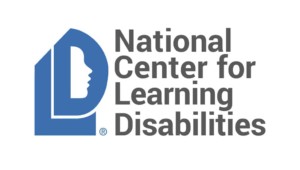
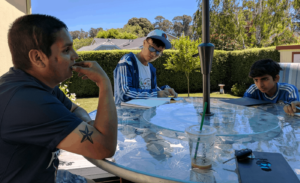
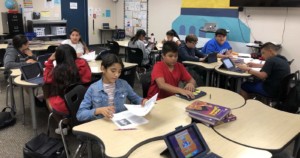
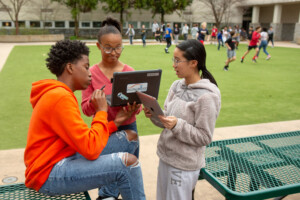
Tatyana V
Dear Marie,
Loved your blog and your story of how your family has experienced and sought out a 21st century education for your kids. Partnership for 21st Century Skills has for 10 years worked to define just what 21st century learning is, and we are embarking with our many partners in the education world to showcase what exemplary 21st century learning really looks like. Thank you for your contribution! Voices from parents like you are critical, and I hope more parents can share how important it is for schools to provide personalized learning that is relevant for the world our children will find outside the school doors.
Marie Bjerede
Wow, yes Tatyana - The work of P21 (http://www.p21.org/) has been so important to the national conversation of what modern teaching and learning needs to be. Definitely needs mentioning!
Please let me know when you are ready to share those showcases. -Marie
Jane Jackson
Dear Marie,
Your post and your references align well with Modeling Instruction. The Modeling Instruction program at Arizona State University is an evolving, research-based program to improve high school and middle school science education, with progressively broader implications for STEM education nationally. Modeling Instruction, under development since 1980, refers to making and using conceptual models of physical systems and processes as central to learning and doing science and engineering. First designed to address the need for reform of high school physics, it has been extended to physical science, chemistry, and advanced high school biology; it can be a unified pedagogical framework for the entire STEM curriculum. Modeling Instruction integrates a student-centered teaching methodology with a model-centered curriculum design. Its use of structured inquiry techniques helps students develop the ability to design experiments, collect and analyze data, and present and defend their conclusions. Modeling Instruction promotes development of critical thinking and communication skills, including the ability to formulate well-defined opinions and evaluate or defend them with rational argument and evidence. Other 21st century skills that are developed include scientific use of computers and probeware, teamwork, and verbal and written communication skills. Students become self-directed, independent learners (Wells et al. 1995). The emphasis on improving classroom discourse prepares students to engage intelligently in public discourse and debate about matters of scientific and technological concern (Desbien 2002, Megowan 2007). Modeling Instruction is a pioneer in its focus on models as units of coherently structured scientific knowledge, and modeling as the core of the scientific method. Student gains in understanding under Modeling Instruction are typically double those under traditional instruction. Modeling Instruction has proven success with students who have not traditionally done well in science, while enhancing learning of all students. Experienced modelers report increased enrollments, parental satisfaction, and enhanced achievement in college courses (across the curriculum!). REFERENCES in parentheses can be downloaded in pdf at
http://modeling.asu.edu/R&E/Research.html .
7GenerationGames
Hi Marie,
Great piece on the features that should be present in education for the 21st century. I wanted to know, however, how technology would fit into your equation? You briefly mentioned online learning, but what about gamification of education?
Additionally, how can students truly achieve autonomy as a result of their education?
Thanks!